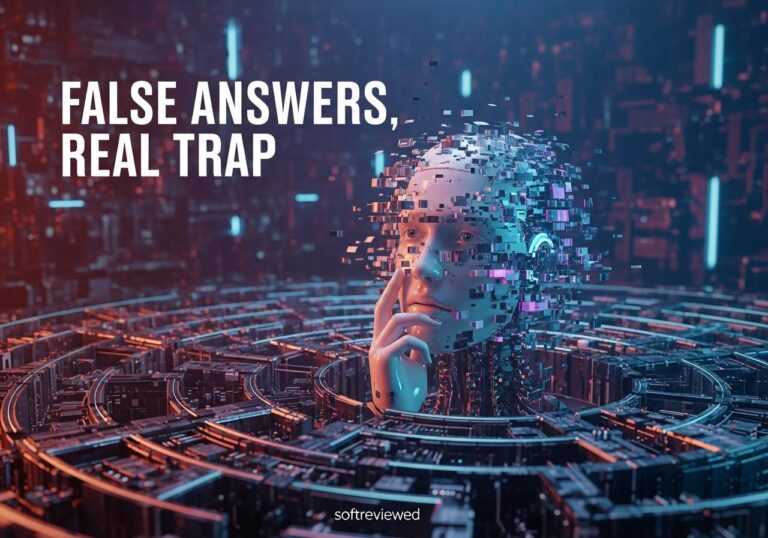AI Hallucinations: Understanding the Risks
How chatbot behavior and prompt design affect the accuracy and reliability of AI-generated content
Concise Prompts Increase Hallucinations
Asking chatbots for short answers can increase hallucination rates, as models choose brevity over accuracy when forced to be concise.
Hallucination Frequency Varies Dramatically
Chatbots hallucinate anywhere from 3% to 27% of the time, depending on the specific prompt and domain being discussed.
System Instructions Have Major Impact
Simple changes to system instructions dramatically influence a model’s tendency to hallucinate, with “be concise” prompts sabotaging accuracy.
Models Lack Space for Corrections
When told to keep answers short, models don’t have the “space” to acknowledge false premises, point out mistakes, or provide strong rebuttals.
Hallucinations Create Real-World Risks
AI hallucinations can cause spread of disinformation, reputational damage, and health risks for organizations using chatbot technology.
Hidden Accuracy Problems Exist
“Fortuitous hallucinations” can occur where wrong processes produce correct answers, making systems appear to work properly even when failing internally.
Why Chatbots Confidently Give False Answers
When you ask a chatbot a question it can’t answer, you expect it to say “I don’t know.” Instead, many models confidently provide a wrong answer. This surprising behavior—known as hallucination—stems from how AI is trained. In this article, we’ll explore why hallucinations happen, what they mean for your projects, and practical steps you can take to build more honest, reliable chatbots.
How Traditional Training Rewards Overconfidence
Most large language models learn from a two-phase process:
- Pretraining on massive text datasets to predict the next word.
- Reinforcement learning from human feedback (RLHF) to refine responses.
Current RLHF methods give full reward for correct answers and zero for anything else. That means a lucky or plausible guess earns the same credit as a perfect answer, while a truthful “I don’t know” is never reinforced.
✅ Correct answer: full reward
⛔️ “I don’t know”: zero reward
Over time, the model learns that guessing—however wrong—is better than admitting uncertainty.
Real-World Impact of AI Hallucinations
Misinformation in High-Stakes Fields
- In healthcare, a confident wrong diagnosis could mislead patients.
- In finance, inaccurate recommendations may result in poor investments.
- In legal contexts, fabricated case references can harm litigation.
Eroding User Trust
Every implausible or fabricated answer chips away at confidence. Users quickly learn not to rely on chatbots for critical or factual information.
Teaching Models to Admit “I Don’t Know”

Researchers suggest adjusting the reward scheme to value honesty:
- Penalize confident errors more heavily than uncertainty.
- Reward expressions of uncertainty when evidence is lacking.
- Calibrate confidence scores so the model reflects real doubt.
By giving partial credit for “I don’t know” or “I’m not sure,” models can learn that staying silent—or hedging—is often wiser than guessing.
Balancing Accuracy and Engagement
While encouraging caution improves reliability, it can also make chatbots appear less engaging. Here’s how to strike the right mix:
📌 Use graded rewards: small bonus for admitting uncertainty, larger penalty for wrong facts.
📌 Provide fallback resources: when unsure, direct users to credible links (e.g., https://www.openai.com/research/).
📌 Implement multi-turn clarifications: ask follow-up questions to narrow down unclear queries.
Ethical and Privacy Considerations
Encouraging honesty doesn’t just improve accuracy—it respects user autonomy. When a model admits uncertainty, users can choose to verify information, protecting them from hidden biases or privacy risks. Transparency also aligns with emerging AI regulations that demand accountable, explainable systems.
Examples of Honest AI in Action
- A medical chatbot that says, “I don’t have enough data on rare conditions—please consult a specialist.”
- A financial assistant that admits, “My last data update was three months ago; please verify current market prices.”
- An educational tutor bot that offers, “I’m not certain—here’s a link to learn more.”
Wrapping Up: Moving Beyond the Hallucination Trap
Understanding why chatbots hallucinate is the first step toward building more trustworthy AI. By redesigning reward models, penalizing overconfidence, and rewarding honest uncertainty, you can create assistants that are not only smarter but also more reliable. When chatbots learn to say “I don’t know,” they earn your users’ trust—and that makes all the difference.







